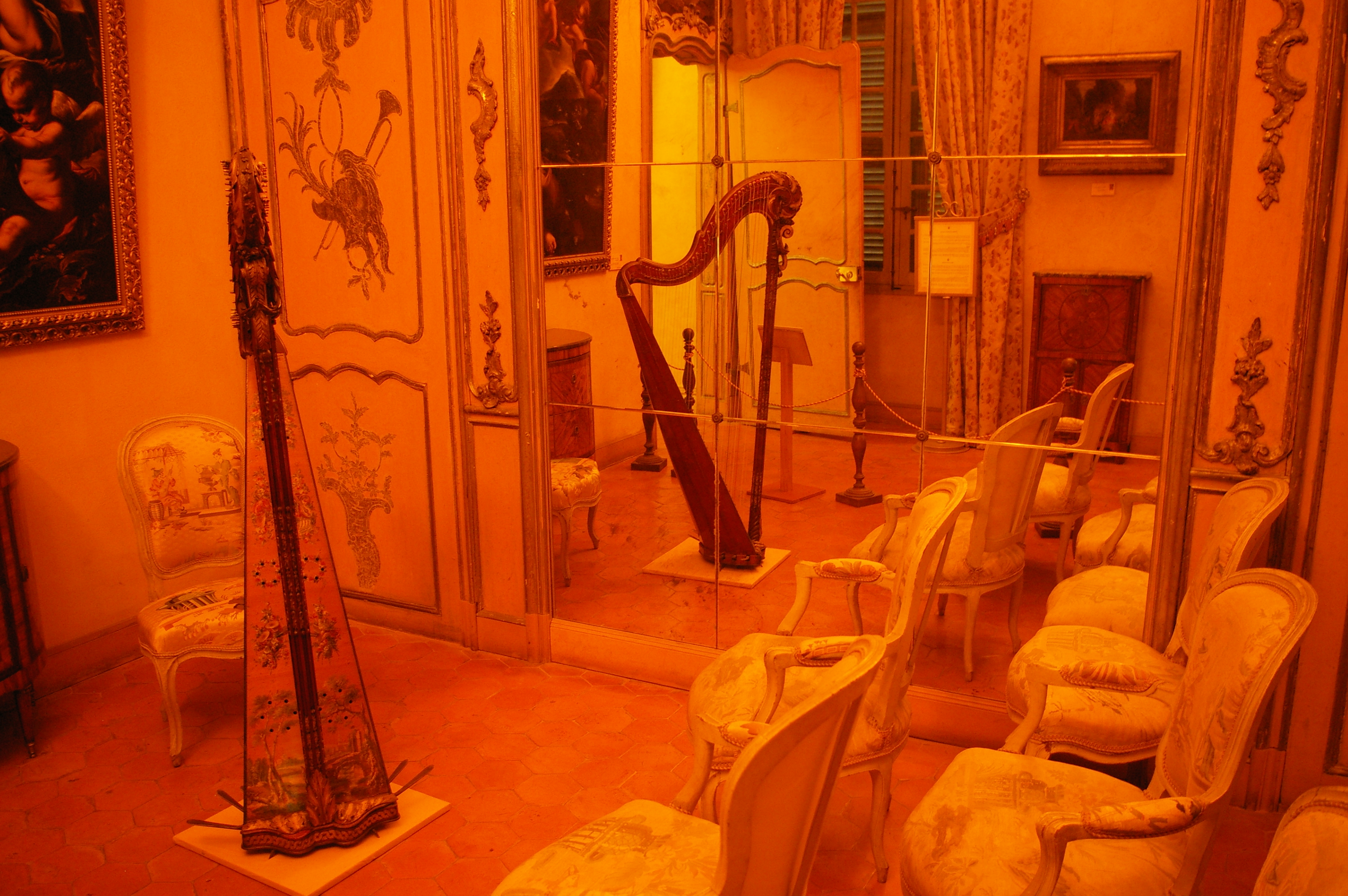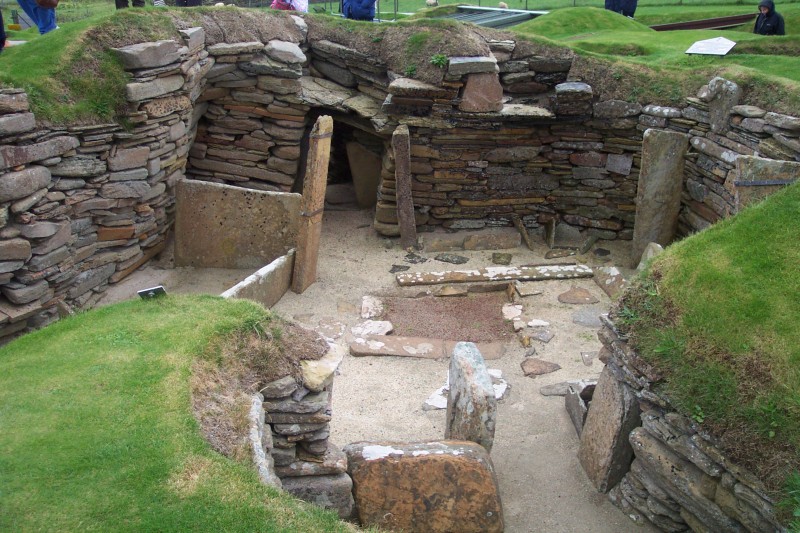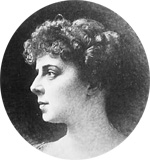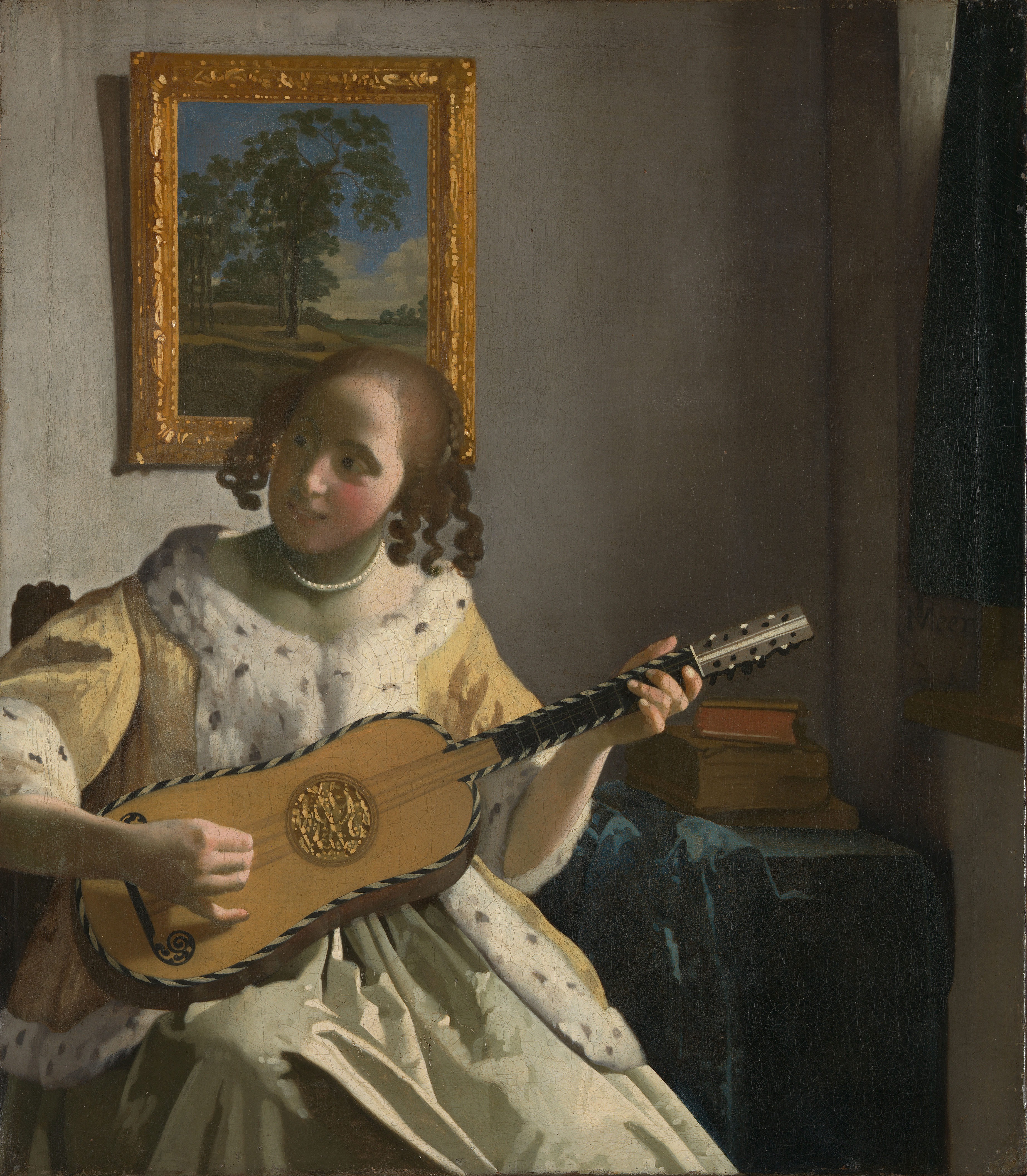|
Palais Lascaris
The Palais Lascaris is a seventeenth-century aristocratic building in Nice, France. Currently, it is a musical instrument museum. Located in the old town of Nice, it houses a collection of over 500 instruments, which makes it France’s second most important collection after the Musée de la Musique (Paris), Musée de la Musique de la Philharmonie de Paris, Philharmonie in Paris. History Built in the first half of the seventeenth century and altered in the eighteenth century, the palace was owned by the Laskaris, Vintimille-Lascaris family until 1802. In 1942, it was bought by the city of Nice to create a museum. Restorations began in 1962 and were completed in 1970, when the museum was opened to the public. In 2001, the historical musical instrument collections of the city of Nice were transferred from the Musée Masséna to the Palais Lascaris with the project of transforming it into a music museum. In 2011, the permanent exhibition of musical instruments was finally op ... [...More Info...] [...Related Items...] OR: [Wikipedia] [Google] [Baidu] |
Room In Palais Lascaris, Nice
In a building or a ship, a room is any enclosed space within a number of walls to which entry is possible only via a door or other dividing structure. The entrance connects it to either a passage (architecture), passageway, another room, or the outdoors. The space is typically large enough for several people to move about. The size, fixtures, furnishings, and sometimes placement of the room within the building or ship (or sometimes a train) support the activity to be conducted in it. History Historically, the use of rooms dates at least to early Minoan civilization, Minoan cultures about 2200 BC, where excavations at Akrotiri (prehistoric city), Akrotiri on Santorini reveal clearly defined rooms within certain structures. In early structures, the different room types could be identified to include bedrooms, kitchens, bathroom, bathing rooms, closets, reception rooms, and other specialized uses. The aforementioned Akrotiri excavations reveal rooms sometimes built above other ro ... [...More Info...] [...Related Items...] OR: [Wikipedia] [Google] [Baidu] |
Gabriel Fauré
Gabriel Urbain Fauré (12 May 1845 – 4 November 1924) was a French composer, organist, pianist and teacher. He was one of the foremost French composers of his generation, and his musical style influenced many 20th-century composers. Among his best-known works are his ''Pavane (Fauré), Pavane'', Requiem (Fauré), Requiem, ''Sicilienne (Fauré), Sicilienne'', Fauré Nocturnes, nocturnes for piano and the songs "Trois mélodies, Op. 7 (Fauré), Après un rêve" and "Clair de lune (Fauré), Clair de lune". Although his best-known and most accessible compositions are generally his earlier ones, Fauré composed many of his most highly regarded works in his later years, in a more harmony, harmonically and melody, melodically complex style. Fauré was born into a cultured but not especially musical family. His talent became clear when he was a young boy. At the age of nine, he was sent to the École Niedermeyer de Paris, École Niedermeyer music college in Paris, where he wa ... [...More Info...] [...Related Items...] OR: [Wikipedia] [Google] [Baidu] |
Baroque Guitars
The Baroque guitar (–1750) is a string instrument with five courses of gut strings and moveable gut frets. The first (highest pitched) course sometimes used only a single string. History The Baroque guitar replaced the lute as the most common instrument found when one was at home. The earliest attestation of a five-stringed guitar comes from the mid-sixteenth-century Spanish book ''Declaracion de Instrumentos Musicales'' by Juan Bermudo, published in 1555. The first treatise published for the Baroque guitar was ''Guitarra Española de cinco ordenes'' (The Five-course Spanish Guitar), , by Juan Carlos Amat. The baroque guitar in contemporary ensembles took on the role of a basso continuo instrument and players would be expected to improvise a chordal accompaniment. Several scholars have assumed that the guitar was used together with another basso continuo instrument playing the bass line. However, there are good reasons to suppose that the guitar was used as an independent i ... [...More Info...] [...Related Items...] OR: [Wikipedia] [Google] [Baidu] |
Paolo Antonio Testore
Paolo Antonio Testore (born 1700 - died 1767) was a Milanese luthier. He was born in Milan, the second son of Carlo Giuseppe Testore, also a noted luthier, and worked out of the family's workshop under the "Sign of the Eagle" on Contrada Larga in Milan. He was one of the three finest instrument-makers from the Testore family, but a distinctive characteristic of Paolo Antonio's work is that he often omitted purfling and sometimes used lower quality wood. Testore's brother Carlo Antonio Testore Carlo Antonio Testore (1687–1765) was a Milanese luthier. Life and career Carlo Antonio Testore was born in Milan Milan ( , , ; ) is a city in northern Italy, regional capital of Lombardy, the largest city in Italy by urban area a ... was also a luthier, and their sons Giovanni, son of Carlo, and Gennaro(?), son of Paolo, continued the family business in Milan during the 1760s. References {{DEFAULTSORT:Testore, Paolo Antonio 1700 births 1767 deaths Italian luthiers ... [...More Info...] [...Related Items...] OR: [Wikipedia] [Google] [Baidu] |
Bass Violin
Bass violin is the modern term for various 16th- and 17th-century bass instruments of the violin (i.e. '' viola da braccio'') family. They were the direct ancestor of the modern cello. Bass violins were usually somewhat larger than the modern cello, but tuned to the same nominal pitches or sometimes one step lower. Contemporaneous names for these instruments include "''basso de viola da braccio''," ''"basso da braccio,"'' or the generic term "'' violone''," which simply meant "large fiddle." The instrument differed from the ''violone'' of the viol, or "''viola da gamba''" family in that like the other violins it had at first three, and later usually four strings, as opposed to five, six, or seven strings, it was tuned in fifths, and it had no frets. With its F-holes and stylized C-bouts it also more closely resembled the viola da braccio. The name "bass violin" is also sometimes used for the double bass. Occasionally, historians have used the term "bass violin" to refer to ot ... [...More Info...] [...Related Items...] OR: [Wikipedia] [Google] [Baidu] |
Violas Da Gamba
The viola da gamba (), or viol, or informally gamba, is a bowed and fretted string instrument that is played (i.e. "on the leg"). It is distinct from the later violin, or ; and it is any one of the earlier viol family of bowed, fretted, and stringed instruments with hollow wooden bodies and pegboxes where the tension on the strings can be increased or decreased to adjust the pitch of each of the strings. Although treble, tenor and bass were most commonly used, viols came in different sizes, including (high treble, developed in 18th century), treble, alto, small tenor, tenor, bass and contrabass (called ). These members of the viol family are distinguished from later bowed string instruments, such as the violin family, by both appearance and orientation when played—as typically the neck is oriented upwards and the rounded bottom downwards to settle on the lap or between the knees. The viola da gamba uses the alto clef. Seven and occasionally eight frets made of "stretche ... [...More Info...] [...Related Items...] OR: [Wikipedia] [Google] [Baidu] |
Gagliano Family
Gagliano is the name of a famous family of Italian luthiers from Naples, dating back to the early 18th century. The Gagliano dynasty – particularly Alessandro, Nicolò I and Gennaro – are considered the high point of Neapolitan violin making. There are as many as eighteen ''Gagliano'' violin makers known worldwide today. Below is a family tree of a few of its most recognizable luthiers. Alessandro Gagliano ( 1700 – 1735) Naples, Italy. As a youth, Alessandro worked in the shops of famed luthiers Nicolo Amati and Antonio Stradivari. After returning to Naples from Cremona, he became the founder of the Neapolitan school. Authentic examples of his instruments in good condition are scarce. A few violas, cellos, one double bass, and several violins have survived. *Typical label: Alexandri r AlessandroGagliano Alumnus Antonio Stradivarius fecit Anno 1722 Nicolò Gagliano I (active 1730 – 1780) Naples, Italy. Nicolò Gagliano (also known as ''Nicolo'', ''Nicola'' or the L ... [...More Info...] [...Related Items...] OR: [Wikipedia] [Google] [Baidu] |
Viola D'amore
The viola d'amore (; ) is a 7- or 6- stringed musical instrument with additional sympathetic strings used chiefly in the baroque period. It is played under the chin in the same manner as the violin. Structure and sound The viola d'amore shares many features of the viol family. It looks like a thinner treble viol without frets and sometimes with sympathetic strings added. The six-string viola d'amore and the treble viol also have approximately the same ambitus or range of playable notes. Like all viols, it has a flat back. An intricately carved head at the top of the peg box is common on both viols and viola d'amore, although some viols lack one. Unlike the carved heads on viols, the viola d'amore's head occurs most often as Cupid blindfolded to represent the blindness of love. Its sound-holes are commonly in the shape of a flaming sword known as "The Flaming Sword of Islam" (suggesting the instrument's development was influenced by the Islamic World). This was one of the thre ... [...More Info...] [...Related Items...] OR: [Wikipedia] [Google] [Baidu] |
Sackbut
A sackbut is an early form of the trombone used during the Renaissance music, Renaissance and Baroque music, Baroque eras. A sackbut has the characteristic telescopic slide of a trombone, used to vary the length of the tube to change Pitch (music), pitch, but is distinct from later trombones by its smaller, more cylindrically-proportioned bore (wind instruments), bore, and its less-flared bell (wind instrument), bell. Unlike the earlier slide trumpet from which it evolved, the sackbut possesses a U-shaped slide with two parallel sliding tubes, rather than just one. Records of the term ''trombone'' predate the term ''sackbut'' by two decades, and evidence for the German term ''Posaune'' is even older. ''Sackbut'', originally a French term, was used in England until the instrument fell into disuse in the eighteenth century; when it returned, the Italian term ''trombone'' became dominant. In modern English, an older trombone or a replica is called a ''sackbut''. The bell section ... [...More Info...] [...Related Items...] OR: [Wikipedia] [Google] [Baidu] |
Tenor
A tenor is a type of male singing voice whose vocal range lies between the countertenor and baritone voice types. It is the highest male chest voice type. Composers typically write music for this voice in the range from the second B below middle C to the G above middle C (i.e. B2 to G4) in choral music, and from the second B flat below middle C to the C above middle C (B2 to C5) in operatic music, but the range can extend at either end. Subtypes of tenor include the ''leggero'' tenor, lyric tenor, spinto tenor, dramatic tenor, heldentenor, and tenor buffo or . History The name "tenor" derives from the Latin word '' tenere'', which means "to hold". As noted in the "Tenor" article at ''Grove Music Online'': In polyphony between about 1250 and 1500, the enor was thestructurally fundamental (or 'holding') voice, vocal or instrumental; by the 15th century it came to signify the male voice that sang such parts. All other voices were normally calculated in relation to the ten ... [...More Info...] [...Related Items...] OR: [Wikipedia] [Google] [Baidu] |
Palais Lascaris Harp
{{disambig, surname ...
Palais () may refer to: * Dance hall, popularly a ''palais de danse'', in the 1950s and 1960s in the UK * ''Palais'', French for palace **Grand Palais, the Grand Palais des Champs-Elysées **Petit Palais, an art museum in Paris * Palais River in the French ''département'' of Deux-Sèvres * Palais Theatre, historic cinema ("picture palace") in Melbourne, Australia *Richard Palais (born 1931), American mathematician *Le Palais, a commune in Morbihan departement, France See also *Palais Royal (other) * Palai (other) * Palace (other) * Palas (other) A palas is that part of a medieval imperial palace or castle which contains the great hall and other prestigious state rooms. Palas may also refer to: Places * Palas, Iran, a village in Iran * Palas, a former commune, nowadays a neighbourhood in ... [...More Info...] [...Related Items...] OR: [Wikipedia] [Google] [Baidu] |
Conservatory Of Nice
The Conservatoire Pierre Cochereau à rayonnement régional de Nice (C.R.R. de Nice) is a state-run regional music and dance conservatoire which serves the French city of Nice (Alpes-Maritimes). It was founded by Adeline Ballet, a pianist, in 1916.European School FederationCONSERVATOIRE OF NICE It is named after its former director Pierre Cochereau, who served from 1962 to 1979. In the musical field, the conservatory provides instruction on stringed instruments (violin, viola, cello, contrabass), woodwinds (flute, oboe, bassoon, saxophone, clarinet), brass (horn, trumpet, trombone, tuba) as well as polyphonic instruments (piano, accordion, guitar, harp, organ, percussion). Singing, writing and musical composition classes, as well as early music lessons are also provided. The ballet and contemporary sections within the dance programme of the conservatory; and the dramatic arts are approached by interpretation, vocal work and improvisation workshops. The current director of the cons ... [...More Info...] [...Related Items...] OR: [Wikipedia] [Google] [Baidu] |









